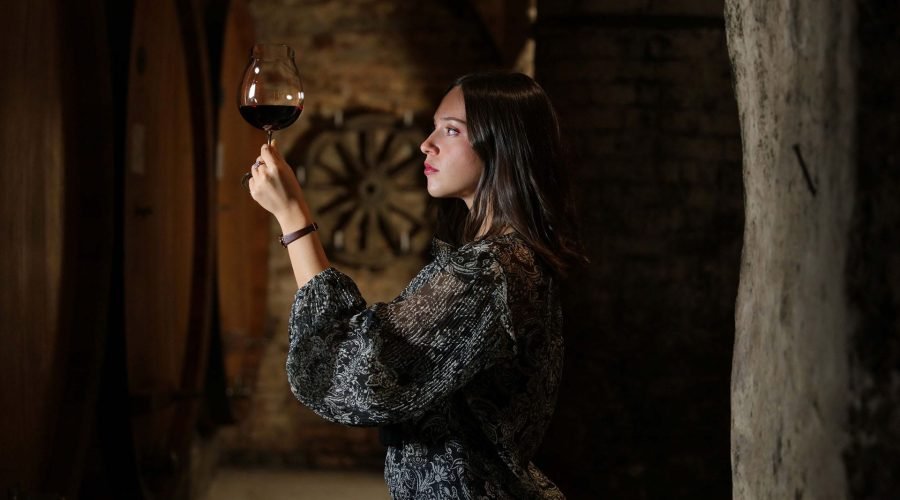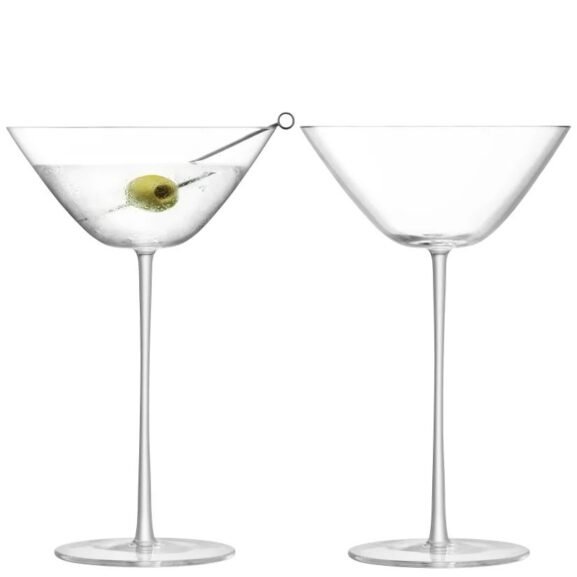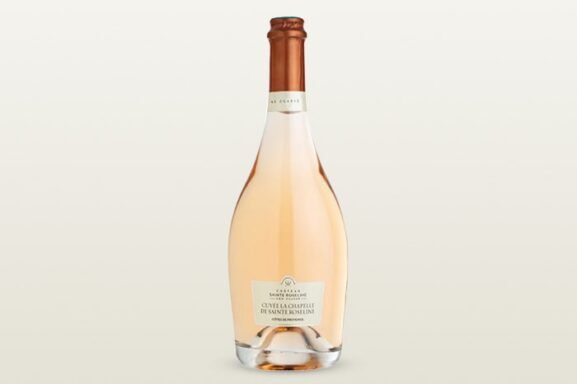A New Generation of Women Is Taking Over Historic Italian Wineries
When Federica Boffa’s father, Pio, passed away due to complications of Covid-19, he left big shoes to fill. He was the larger-than-life proprietor of Pio Cesare and the fourth generation to lead one of the last foundational wineries in the Barolo and Barbaresco regions. She was just 23.
As heir apparent, Boffa had been groomed to go into wine and Pio taught her to love every inch of the winery ferociously. “My father made me fall in love with wine,” she says. “He used to bring me to the vineyards when I was a little girl and tell me stories about Nebbiolo, our terroir, our microclimate and our soils.”
But 23 is an incredibly early age to step into the ruling role of such a storied winery. Her family has long been hailed for its structured, elegant single-vineyard bottlings of Barolos. The pressure she faced—and continues to face—is intense. “The most challenging aspect is being a very young woman at the helm of a very historical and prestigious brand operating in a traditionally ‘old-man’ business,” says Boffa. “I’m presenting our wines and older vintages to our buyers, and almost all were produced before I was born.”
You May Also Like: In Barolo, 11 Distinct Villages Create the King of Wines
Despite the unfathomable loss of her father, Boffa has been striding forward with confidence. Her love of wine, respect for Barolo’s heritage and sense of duty to her family and its legacy have been her fuel.
While still far from the norm, Boffa is not the only female heir to an Italian wine dynasty to find herself carving out a crucial role for herself in what has been for centuries a male-dominated industry. A growing slew of young women have been ushering in a new era of Italian wine, from Abruzzo and Barolo to Chianti and beyond.
Navigating Traditional Gender Roles
Fourth-generation winemaker Marzia Varvaglione grew up in a small house beside the production facilities of Varvaglione 1921, the over 100-year-old winery her family runs in Puglia. Her early memories include playing with employees, ducking behind mountains of grape skins in games of hide and seek.
Growing up in wine, she noticed that women’s roles were limited. “For so long, people thought you couldn’t produce wine if you were a woman,” says Varvaglione. “You would work in administration or marketing.” Even fewer women were allowed to take over for older generations when it came time to pass the torch.
Yet, as Italy’s wine scene has been slowly shrugging off its reputation for machismo, women winemakers are becoming less of a novelty. “My generation? We do everything,” says Varvaglione. “We drive the tractor, we work in the vineyards and women work both in production and sales.”
There’s also Angela Fronti in Radda-in-Chianti, who took back her family’s vineyards to launch her own label Istine, and Alessia Antinori, also in Chianti, who became the first woman to lead her family’s winery after 25 generations. Even international women are trickling in to take over historic properties.
You May Also Like: 8 Wines that Showcase the Innovative Power of Female Winemakers
Meanwhile, legendary Abruzzese producer Emidio Pepe’s line of succession is entirely female. His two daughters are the owners and proprietors of the estate. Chiara de Iulis Pepe, his granddaughter, handles winemaking.
When she stepped into the winemaking role in 2020, Pepe found it “incredibly difficult to lead my grandfather’s team as a young girl,” she says. But it wasn’t just her age and gender that posed problems. The older workers had set ways of doing things and were resistant to the much-needed changes that had to take place to ensure the future of the winery and vineyards.
Pepe, fortunately, is no longer fighting against the status quo. To give her space to define her winemaking, her elders gave freedom to build a new team. Now, there are six people in the vineyards. She’s the oldest and all her colleagues share similar goals. “No one questions themselves twice when they have to do something by hand,” she says. “They know that turning on the tractor for even one pass is unnecessary.”
New Hurdles Heat Up
Alongside age and gender, this up-and-coming crop of female winemakers are reckoning with changing climates and shifting drinking habits—far larger foes than what past generations were up against.
Pepe feels lucky to have inherited healthy soil; her grandfather never employed synthetic chemicals or fertilizer. But when she took over the winemaking duties in 2020, she felt the obligation to extend his sustainable environmental practices further.
She believes her relatively young age is an asset rather than a liability when it comes to navigating the climate crisis. “I’m 30—when I was born, global warming was very present,” Pepe says. “We make wine, and we try to make the best possible wine we can, but I feel like as agriculturalists, we have this massive responsibility to ensure our soils are healthy and capturing as much C02 as possible.”
You May Also Like: Wine Growers Have a Pruning Problem—Here’s How Some Are Trying to Fix It
Whereas many of her older neighbors find it “messy” to allow the ground between the vines to grow wild, Pepe has no compunction about doing so. The natural flora and fauna help improve the microbiology of the soil, promote pollinators and leave the ground beneath her soft and aerated. She prunes the vines by hand—a laborious but essential part of ensuring their health—well into the future. “I would like to see myself making wines for many decades,” she says.
The conversation around climate change is ever-present among these young industry pros. The Italian Young Winemakers Association, of which Varvaglione is president, are always looking for ways to lessen their impact. They discuss topics like carbon sequestration, which sustainable corks are best and new climate-friendly clones. Not only do they share their findings with one another, but they also regularly talk about how to share this information with the older generation, which is less concerned about shifting climates.

Jumping the Generational Gap
Many young winemakers struggle to reckon with their forebears’ way of thinking, and a growing subset has been striking out with projects of their own. Still, others are finding ways to effect change from within.
Varvaglione’s elders have been open to newer ideas. In 2012, she and her siblings convinced her parents to release 12 e mezzo, a line of low-alcohol, sustainably made wines—years before the low-alcohol movement rose to prominence. The project allows them to utilize younger vineyards and focus on the region’s native grape varieties, mainly Primitivo and Negroamaro.
“Our parents weren’t sure about these wines when we started,” says Varvaglione. “They trust us now. They’re ready to explore new projects.”
You May Also Like: Why You Should be Drinking Timorasso
Just as Varvaglione has pushed her family’s winery into the present day with varying styles and varietals, Boffa has been able to do the same. Her father bet on Chardonnay 40 years ago, when it was wildly out of fashion in Piedmont; now Boffa is gearing up to release a Timorasso, a native white grape that nearly went extinct decades ago. She’s also expanding upon what already works, continuing to produce Pio Cesare’s famously elegant Nebbiolo. However, she’s widening its geographical footprint with help from cousin Cesare Benvenuto, planting vines in the higher altitude, cooler climate growing regions of Alta Langa and Colli Tortonesi.
“It’s very important for me to never consider tradition as a cage or a burden, but always as a starting point or a sliding door,” says Boffa, who credits this history for the great bottles the winery still produces today. “However, from this very solid heritage… we can improve and make greater new beginnings.”
Published: March 19, 2024


